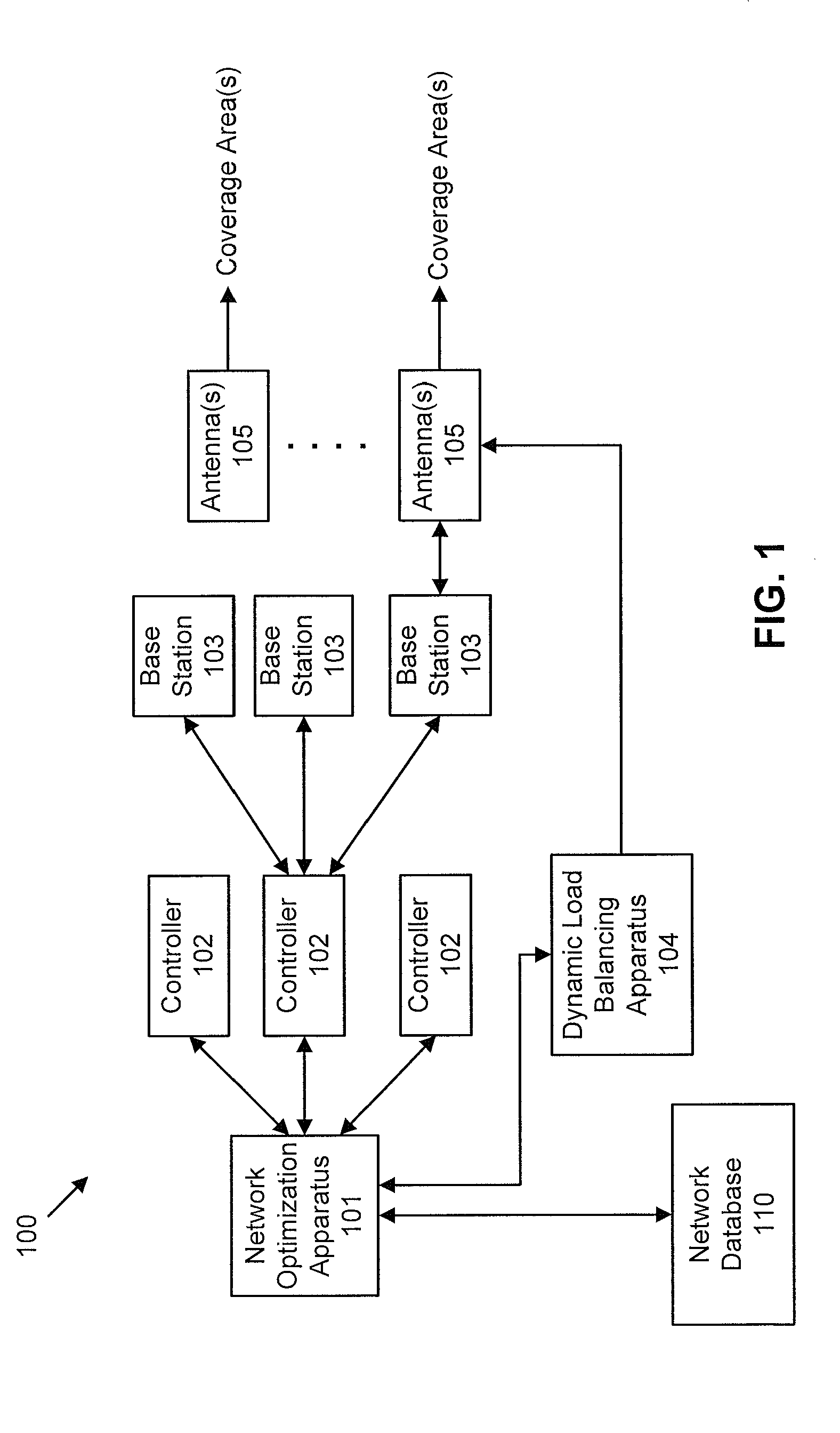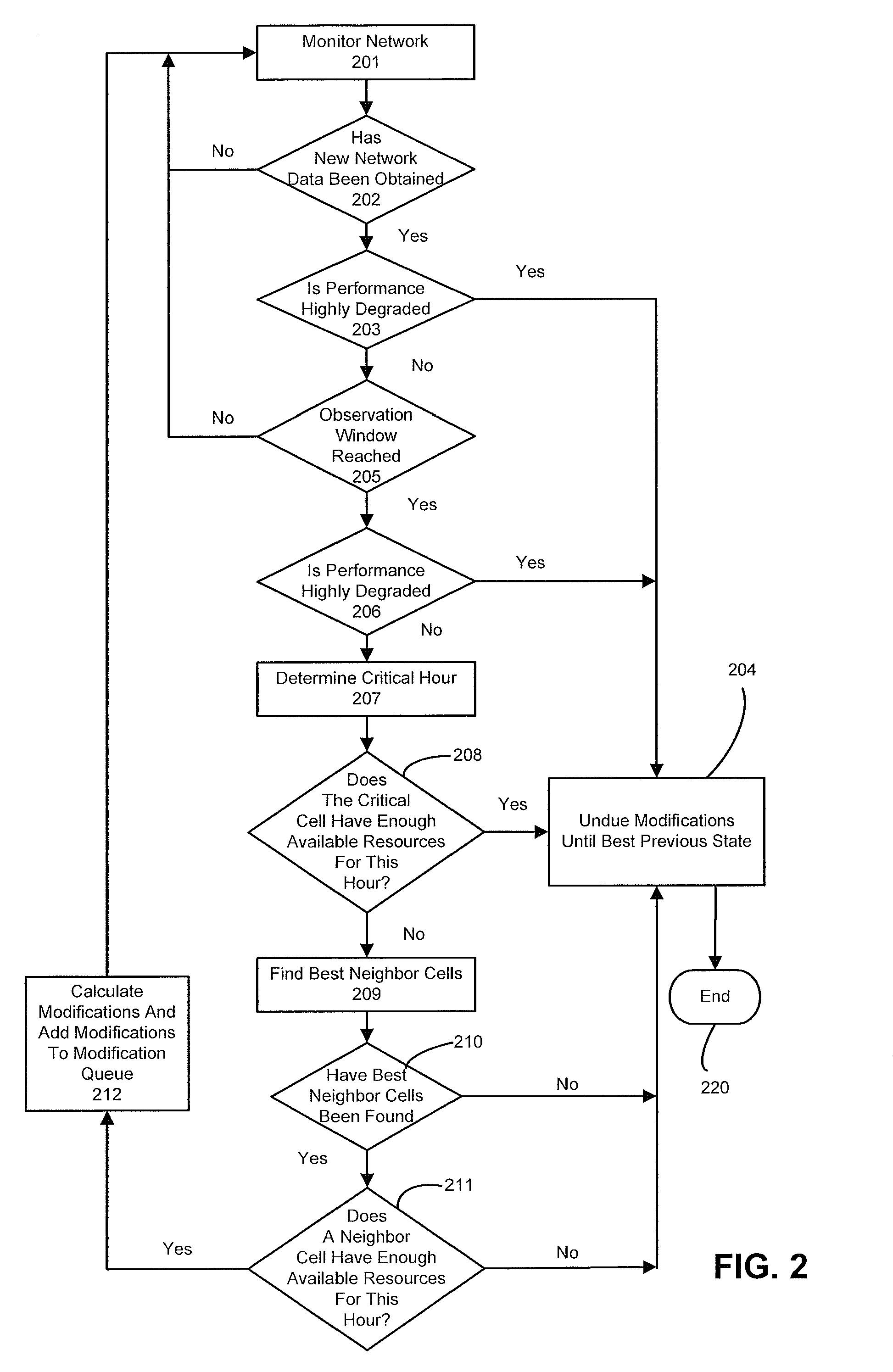Self-optimizing wireless network
a wireless network and self-optimization technology, applied in the field of wireless network planning and optimization, can solve the problems of consuming a large amount of human resources, affecting and affecting the coverage of the antenna as well as the interference that affects the coverage area of neighboring antennas
- Summary
- Abstract
- Description
- Claims
- Application Information
AI Technical Summary
Benefits of technology
Problems solved by technology
Method used
Image
Examples
Embodiment Construction
[0025]In the description that follows, numerous details are set forth in order to provide a thorough understanding of the invention. It will be appreciated by those skilled in the art that variations of these specific details are possible while still achieving the results of the invention. Well-known elements and processing steps are generally not described in detail in order to avoid unnecessarily obscuring the description of the invention.
[0026]In the drawings accompanying the description that follows, often both reference numerals and legends (labels, text descriptions) may be used to identify elements. If legends are provided, they are intended merely as an aid to the reader, and should not in any way be interpreted as limiting.
[0027]FIG. 1 is a system for optimizing of network parameters in a wireless network in accordance with an embodiment of the invention. In particular, the wireless network 100 illustrated in FIG. 1 includes a network optimization apparatus 101. The wireles...
PUM
 Login to View More
Login to View More Abstract
Description
Claims
Application Information
 Login to View More
Login to View More - R&D
- Intellectual Property
- Life Sciences
- Materials
- Tech Scout
- Unparalleled Data Quality
- Higher Quality Content
- 60% Fewer Hallucinations
Browse by: Latest US Patents, China's latest patents, Technical Efficacy Thesaurus, Application Domain, Technology Topic, Popular Technical Reports.
© 2025 PatSnap. All rights reserved.Legal|Privacy policy|Modern Slavery Act Transparency Statement|Sitemap|About US| Contact US: help@patsnap.com



